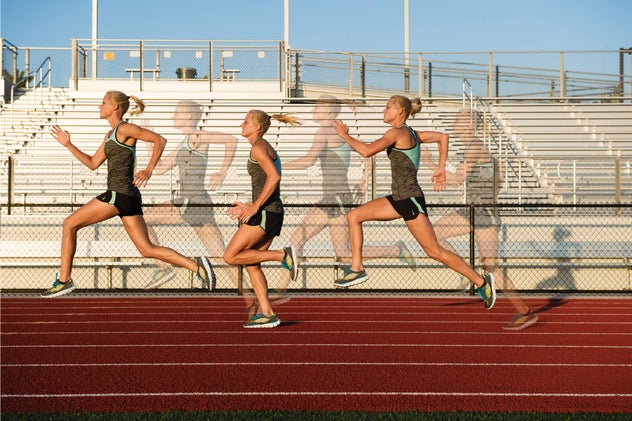5 Plyometric Drills For Triathletes

Photo: John David Becker
While sprinters and endurance athletes are wholly different creatures, we distance junkies can learn a few things from the speed demons. Sure there’s no substitute for time in the pool, in the saddle and on your feet, but throwing in some explosive sprint drills before high-intensity run workouts can aid in both stamina and finishing speed, even in a long-course race.
A recent study published in the Journal of Strength and Conditioning Research explored the effects of explosive training on endurance performance in runners. After splitting a group of competitive middle- and long-distance harriers into two groups, they had one runner continue training as usual and the other subscribe to explosive training concurrently with his or her endurance workouts.
The researchers had all participants run a 20-meter sprint and 3.4K time trial at the beginning and end of the six-week study to monitor changes in fitness. They discovered that the runners who added explosive drills to their training showed a significant improvement in both running trials, while the control group did not.
Also known as plyometrics, explosive exercises like squat jumps and kettlebell swings have a whole host of benefits for endurance athletes, especially when combined with traditional endurance training. Indeed, there is an important relationship between propulsive forces in running and elastic return of the muscle no matter what speed you’re going or how far you’re traveling.
“Running is naturally hopping from one leg to the other, very plyometric in nature,” explains Al Lyman, a USA Triathlon-certified coach and founder of Pursuit Fitness in Connecticut. “When I’m working with triathletes and looking at their running, I always consider elastic return.”
Put simply, as you run, you not only have to propel yourself off the ground with each step, you also have to effectively absorb forces as you strike. If your body can’t efficiently execute this process over the course of a race, the resulting fatigue can lead to other issues, including injuries and deteriorating performance.
“Plyometric training has a direct impact on resisting fatigue,” explains Lyman. “You often see Ironman races decided in the late stages of the run when it all comes own to how efficient the athlete is when they need to bring everything into play.”
Lyman warns it is important to ease into this type of training. Unless you have a sprinting background, give yourself time to master basic drills before moving to anything more complicated. “Before I introduce plyometrics, I have to be sure the athlete can handle the loads and forces at a lower level of activity,” he explains. This includes assessing overall core stability with exercises like single-leg balancing.
Each individual athlete has to assess his or her readiness for more advanced plyometric drills. If your core strength is sound and you can execute proper technique with these drills, the research shows you’ll see a difference in running performance after as little as six weeks. Start by including 10 minutes of drills 1–2 times a week after a warm-up and before your next track workout, hill repeats or tempo run.

Single-Leg Jump Squat
Reps: 5–10 jumps each side
Lower your body into a single-leg squat as you balance on one leg. Pause for 2 seconds and then explode upward by bringing your arms down and jumping off your standing leg. Finish reps on one leg before switching to the other side.

Box Jumps
Reps: 10–15 jumps
Begin in a squat position in front of a platform 12 inches off the ground. Lower your body down and then spring up onto the box, swinging your arms up to increase momentum and balance. As you master this move, increase the height of the platform

Bounding
Reps: 2×20 meters
Take a few running steps to gain speed and then propel your body off the ground with one leg and land on the other, alternating in one fluid, bounding motion. Your foot should make contact with the ground slightly leading with the heel and your torso should be in line with a forward lean.

Single-Leg Hops
Reps: 2×15 meters on each leg
Standing on one foot, hop forward a couple feet, focusing on a soft and balanced landing. Continue hopping on that foot for 15 meters. Turn around and complete on the other leg.

High Skips
Reps: 2×20 meters
Do an exaggerated skip, driving your left knee to your chest and right arm upward, focusing on up-and-down height rather than forward motion. Continue by alternating sides.